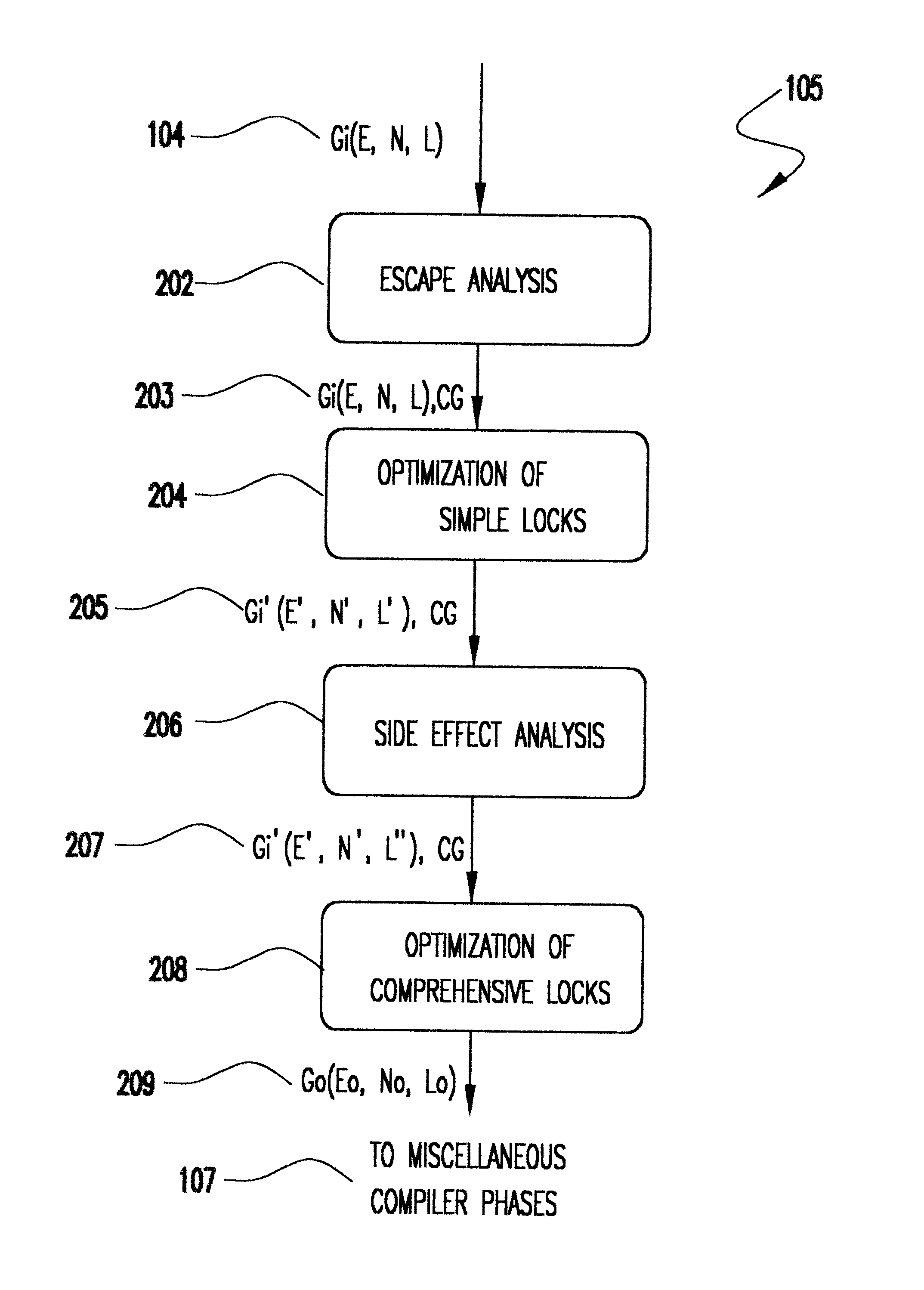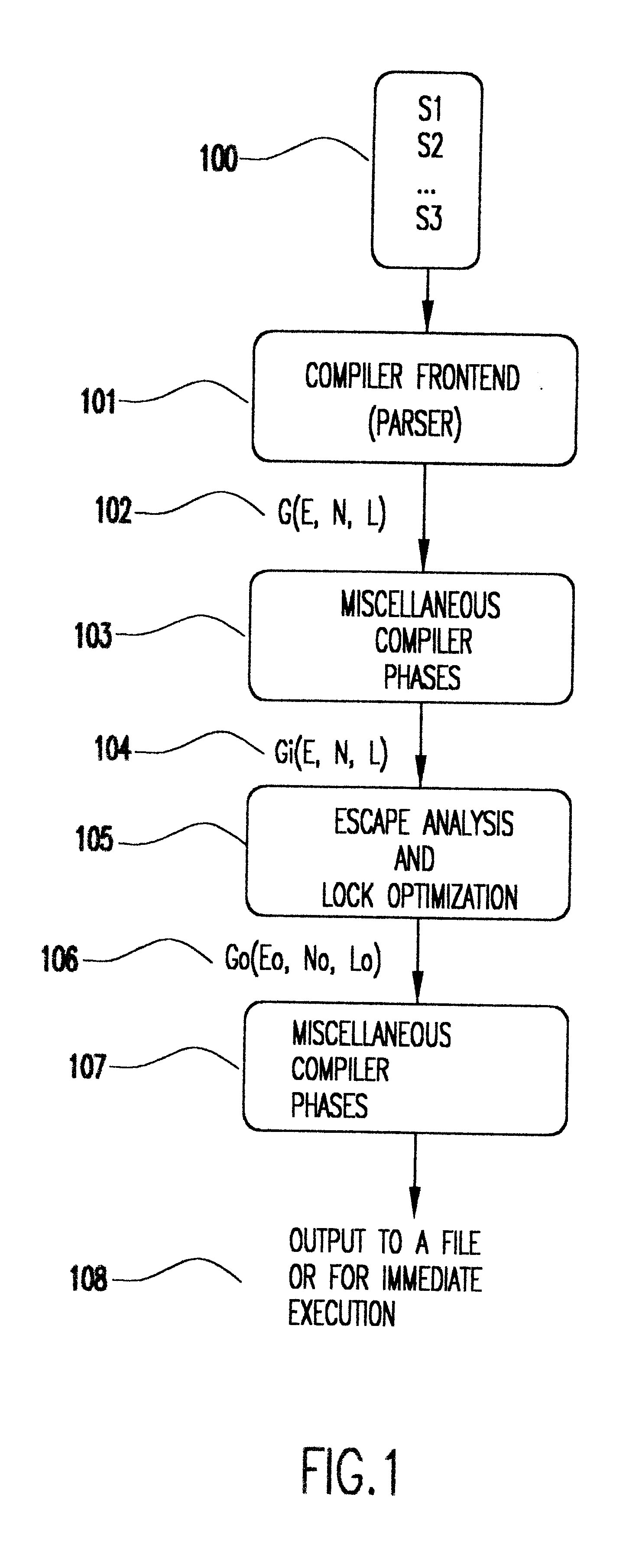Method for optimizing locks in computer programs
a technology for optimizing locks and computer programs, applied in the field of computer programming, can solve the problems of not performing the method does not perform a class of optimization, and the lock operation is not needed to support the locking operation, so as to achieve the effect of optimizing locks and reducing the amount of computer storage needed for the program to execute, and reducing the execution time of the program
- Summary
- Abstract
- Description
- Claims
- Application Information
AI Technical Summary
Benefits of technology
Problems solved by technology
Method used
Image
Examples
Embodiment Construction
Reducing And Simplifying Locking Operations in Programs With Simple and Comprehensive Locking Operations
Referring now to the drawings, and more particularly to FIG. 1, there is shown an embodiment of the invention. A computer program 100 has been transformed into a list of instructions 102 by the front end or parser 101. The list of instructions can be represented by a graph (G(E,N,L)) whose nodes N are operations on variables, and whose edges E represent the flow of control between instructions. It is not necessary that they be encoded as such, and may be encoded as records in a file, as a logically flat structure, or by other means. The instructions are the instruction set of an intermediate compiler language or machine. L, the labels of the graph, contain auxiliary information about the edges and nodes in the graph. Some of the instructions at nodes on the graph are locking operations. The locking operations are of two types. The first type have no side effects. These locking ope...
PUM
 Login to View More
Login to View More Abstract
Description
Claims
Application Information
 Login to View More
Login to View More - R&D
- Intellectual Property
- Life Sciences
- Materials
- Tech Scout
- Unparalleled Data Quality
- Higher Quality Content
- 60% Fewer Hallucinations
Browse by: Latest US Patents, China's latest patents, Technical Efficacy Thesaurus, Application Domain, Technology Topic, Popular Technical Reports.
© 2025 PatSnap. All rights reserved.Legal|Privacy policy|Modern Slavery Act Transparency Statement|Sitemap|About US| Contact US: help@patsnap.com



